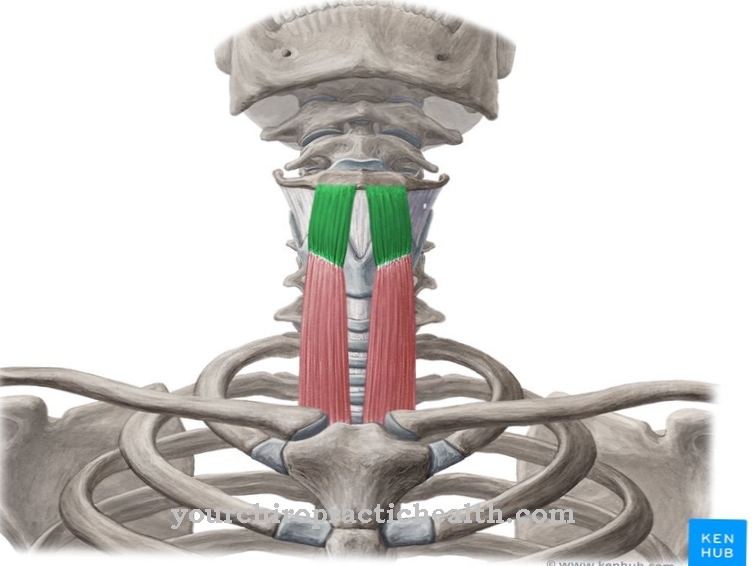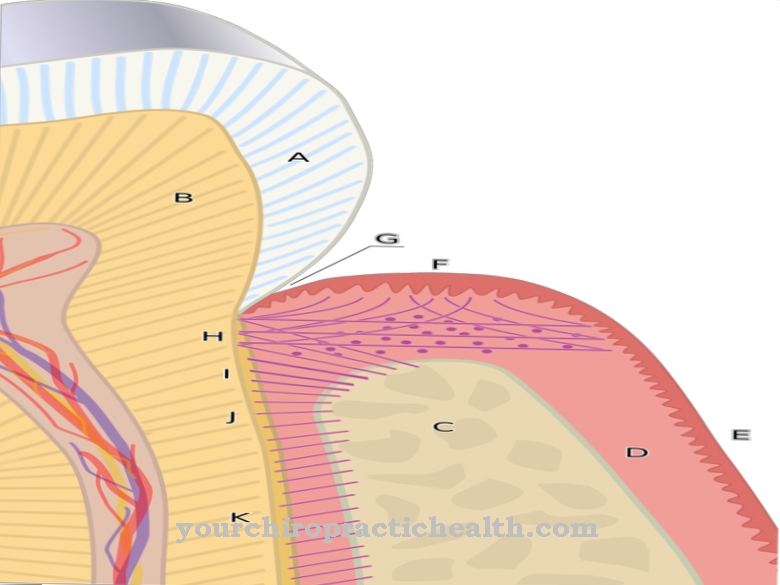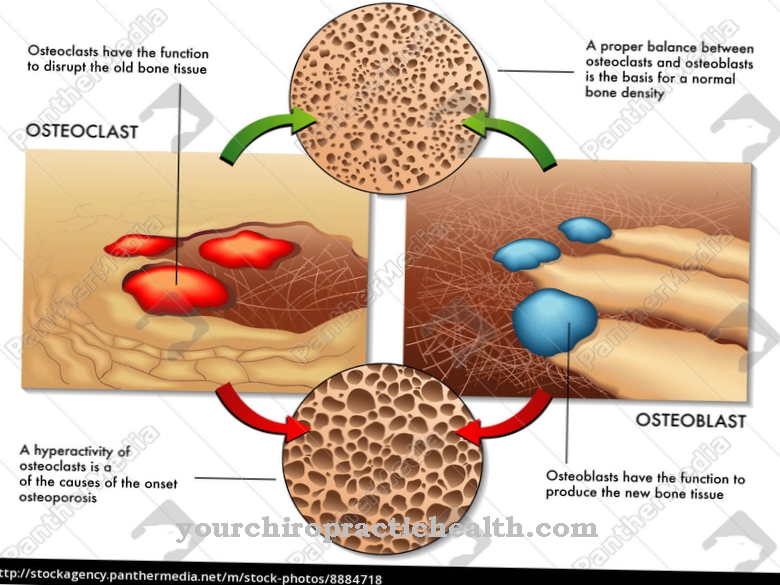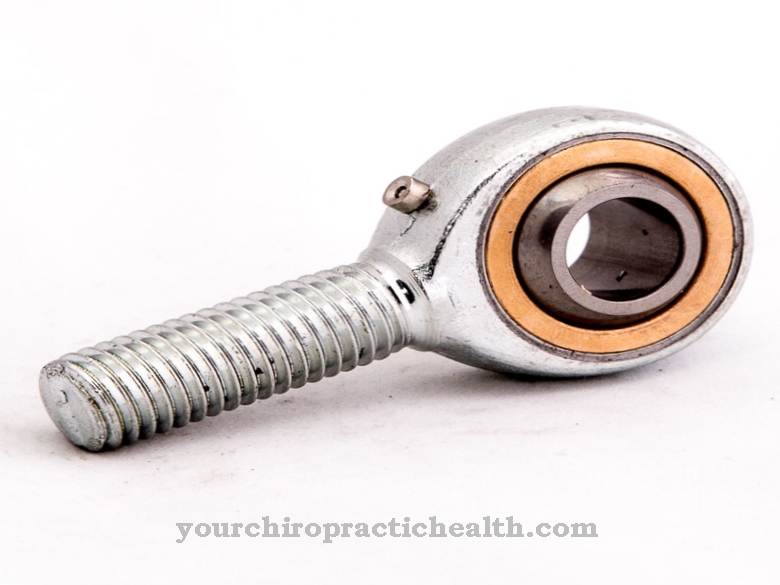The Diencephalon, also Diencephalon called, is one of the five major main sections of the brain. It works closely with the cerebrum (endbrain) and together with it forms the so-called forebrain. The diencephalon is in turn divided into five other structures, which take on a variety of functions.
What is the diencephalon?
The name Diencephalon results from its location in the brain. It is located in the center of the brain between the cerebrum and the brain stem. The midbrain joins at the apex. Inside the diencephalon is the 3rd ventricle, a cavity filled with cerebral fluid.
Besides the endbrain (Telencephalon), the midbrain (Mesencephalon), the hind brain (Metencephalon) and the posterior brain (Myelencephalon) it is one of the five major sections of the brain. It is functionally inseparable from the endbrain. The diencephalon is responsible for the sensory sensations seeing, smelling and hearing.Furthermore, it also contains the centers for surface sensitivity, deep sensitivity and emotional sensation. The diencephalon represents the switching point between the vegetative nervous system and the hormonal system.
Anatomy & structure
The diencephalon is located between the endbrain and the brain stem. Together with the endbrain it forms the so-called forebrain (Prosencephalon). In embryonic brain development, a primary cerebral vesicle first forms the prosencephalon, from which both the cerebrum and the diencephalon are formed with the formation of two secondary cerebral vesicles. This fact already indicates the close functional connection between the two areas of the brain. The brain stem in turn consists of the midbrain, bridge (pons) and extended spinal cord, Medulla oblongata or afterbrain. The diencephalon is connected to the brain stem via the midbrain. The cerebellum responsible for motor function does not border directly on the diencephalon, but forms fibrous connections to the thalamus via so-called efferents and a diffuse neuron network via the brain stem to the diencephalon.
The diencephalon can thus act as a central switching point. To this end, it is divided into five structural centers, which in turn have to fulfill different functions. The structures of the diencephalon include the thalamus, hypothalamus, epithalamus with epiphysis, the subthalamus and the metathalamus.
Function & tasks
The diencephalon fulfills many important functions of the autonomic nervous system.It is responsible for the balance between the sympathetic and parasympathetic nervous systems. It also controls the biorhythm. This always happens in close cooperation with the cerebrum. As the central control center, the diencephalon forwards the signals from the brain stem to the endbrain.
The coordination of the various functions is possible through the interaction of the five different structural areas thalamus, hypothalamus, epithalamus, subthalamus and metathalamus. The thalamus represents the largest part of the diencephalon. It in turn consists of many core areas, each of which is connected to the cerebral cortex.
Information and signals from the body are passed on to the cerebrum via the core areas of the thalamus, where they are processed and processed into conscious sensory impressions. This is why the diencephalon is also called the gateway to consciousness. Sensitive stimuli such as touch or pain as well as sensory stimuli such as smell, taste, sight or hearing are processed.
However, the thalamus also has a filter function to separate important from unimportant stimuli. This is necessary to protect the body from overstimulation. The gross motor function is controlled via a further area of the diencephalon, the subthalamus. For fine-tuning, the subthalamus is divided into an area that promotes and inhibits motor skills.
The epithalamus includes the pineal gland, which is an intermediate position between the endocrine nervous system and the endocrine organ. The pineal gland produces the hormone melatonin and is responsible for the organism's biorhythm. However, the epithalamus also has important functions with regard to the olfactory and optical sensory impressions. The metathalamus influences the visual function and controls, among other things, the perception of objects.
The hypothalamus has particularly important functions. It acts as the control center of the autonomic nervous system. It regulates body temperature, blood pressure, food and fluid intake, sleep and sexual behavior. Due to the connection of the hypothalamus to the pituitary gland, it also controls the endocrine system of the organism. That is why the diencephalon also functions as a mediator between the vegetative nervous system and the hormonal system.
You can find your medication here
➔ Medicines against memory disorders and forgetfulnessIllnesses & complaints
Due to the variety of tasks of the diencephalon, different diseases can result when it is disrupted. The consequences of diseases in the diencephalon include sleep disorders, disorders of the biorhythm, diseases of the autonomic nervous system or hormonal diseases.
When the thalamus is damaged, the so-called thalamic syndrome occurs. Symptoms of this syndrome are central pain and neurological deficits. Paralysis on one side of the body, hypersensitivity to touch stimuli, numbness and sometimes increased reflexes occur.
The cause here is often a stroke that affects the corresponding brain area. The hypothalamus, in turn, controls the hormonal system via the pituitary gland. In diseases of the hypothalamus, therefore, there are often disturbances in hormone production or regulation in the hormonal system. Many hormone-related diseases have their starting point here. Either too much or too little hormones are produced.
The disease that occurs is often named after the hormone in question. Depending on which hormone is affected, it can lead to sleep disorders, disorders of the water balance, growth disorders, over- or underactive thyroid and even hormone-related prostate cancer. Many disorders or damage in the diencephalon are, however, only partial aspects of far more comprehensive disease processes.
























.jpg)



